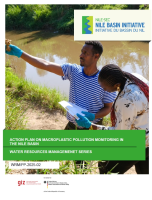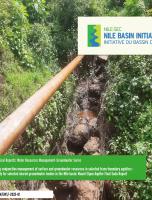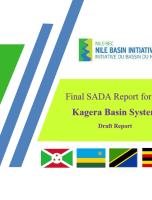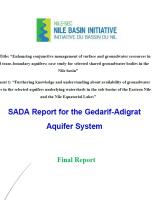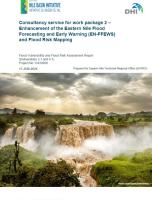Abstract
Like many regions across the globe, the Nile
Basin countries face an increasing challenge
of water resources allocation for their
growing and competing supply needs in
different sectors: agricultural, municipal
and industrial, hydropower, navigation,
water quality as well as meeting
environmental needs to mention some. In
addition, climate change induced rising
temperature and reduction and/or shifting
rainfall patterns across much of the basin
will exacerbate the challenge.
While traditionally most of the efforts have
focused on assessment of adequate water
supply and understanding its spatialtemporal changes, an integrated basin wide
management cannot be considered without
understanding water demand for different
sectors and characterizing the gap between
supply and demand. Often times these gaps
are not trivial.
This project aimed at developing a robust
framework to estimate municipal and
industrial water demand across cities in the
Nile Basin countries.
The specific objectives were to:
Develop/refine baseline water demand
for municipal and industrial water use
for 2016
Develop projection of water demand for
municipal and industrial sectors for the
Nile Basin through the year 2050
Develop viable scope for water saving
from the municipal and industrial water
use sectors through employment of various measures, such as demand side
management, adoption of water efficient
technologies and reduction of losses.
To fulfil these key objectives the project
team worked closely with Nile Basin
Initiative (NBI)staff, technical staffs
representing the Nile Basin countries, and
national consultant that were retained for
data collection in each of individual
countries, wherever possible.
The methodology that is used in this project
started with extensive desktop research that
provided background information on
methods and tools for demand projection as
well as coordinating with NBI staff through
virtual meeting to set the framework. The
project team presented its initial findings to
a wider group of Nile Basin technical
experts during the 5th Regional Expert
Group workshop in Kigali, Rwanda that was
held from February 23rd through 25th, 2019.
Breakout sessions were formulated to elicit
specific inputs from workshop participants.
One of the most challenging aspects of the
project was lack of data that was necessary
for estimation of baseline water use as well
as projection to the 2050-time horizon. To
help alleviate some of these challenges, NBI
retained the service of national consultant
from most of the basin countries to collect
required data1
. Accordingly, in collaboration
with NBI staff, the project team designed an
extensive survey document to capture
information from municipalities, cities, and
regions in the Nile Basin countries. This information was used as a basis for
database design and implementation
(Technical Note I), demand forecasting
methodology development and
implementation (Technical Note II), and
assessment of demand management/water
conservation measures (Technical Note III).
These technical notes are summarized in the
next section.
Through this project, the team
accomplished the following:
Developed an extensive survey and
database collection framework for use
with this project as well as accommodate
ongoing activities.
Designed, implemented, and populated
the first unified Nile Basin level
database in Structure Query Language
(SQL) frame for municipal and
industrial water use collection,
monitoring and modeling
Produced an estimate of industrial and
municipal water demand through 2050.
Developed an assessment framework for
water saving through implementation
efficient technologies and alternative
water sources
